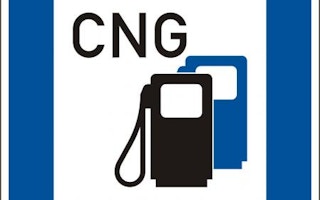Motorists now disenchanted with their compressed natural gas (CNG) cars may be allowed to dismantle the CNG kit to revert to petrol-only rides.
If they do this, however, they will have to pay back the tax rebate they enjoyed when they bought the car.
The amount to be paid back could be pegged to the number of years remaining in the 10-year lifespan of the car; an administrative fee may also be levied.
The news came as the Government announced yesterday that the rebate scheme for CNG cars will be extended by another year until the end of next year.
The rebate, at 40 per cent of the car’s additional registration fee, comes to $6,000 to $8,000 for a compact Japanese car.
The Straits Times understands the Land Transport Authority will unveil details of the move to give the owners of the 2,700 or so CNG cars here the choice to convert to petrol-only vehicles by the year end or early next year.
It has been an option for which the Singapore Vehicle Traders Association has lobbied since early this year. Its secretary Raymond Tang said many CNG car owners have changed their minds about these vehicles, and should be given the option to switch.
He said: ‘Just as off-peak car owners can convert their red-plate cars to ‘normal’ cars, the choice should be given to CNG car owners too.’
There are three reasons such cars have lost their sheen, ‘green’ though they may be:
Too few CNG refuelling stations: Many drivers find it inconvenient that there are only half a dozen of these, compared with around 200 petrol kiosks.
Loss of power: Cars converted to run on CNG lose out on pulling power, to say nothing about the loss of boot space taken up by the CNG tank.
A looming pump tariff: From January, a tariff of 20 cents per kg of CNG sold at the pumps will kick in.
Mr Tang said: ‘Many people who bought CNG cars did not fully understand what they were in for. These cars also have a poor resale value, because very few people want them.’
Retiree Yap Wee Meng, 62, who owns a CNG-petrol bi-fuel Chevrolet, said he will decide only in the new year whether to dismantle his car’s CNG kit. He said: ‘It’s a good idea to let people have freedom of choice, if they’re willing to pay.’
The number of CNG cars has stagnated since 2009, even as the number of petrol-electric hybrids has climbed to about 3,650.
It was in 2009 that the Government announced that the green-vehicle rebate for these cars would cease by the end of this year, citing that they were not ‘significantly cleaner’ than petrol cars.
But yesterday, the Finance Ministry said it was extending the rebate scheme for them by a year, following feedback from the public, which asked for it to expire together with the rebate for electric and petrol-electric hybrid models.
Mr Johnny Harjantho, the managing director of CNG station firm Smart Energy, said the extension was good news, but that the only way for CNG vehicles to become more popular was to have more stations.
‘We can’t have more stations if the Government does not release more land to us for them,’ he said.
The green-vehicle rebate scheme was introduced in January 2001 for electric and hybrid cars. Because these vehicles cost more than conventional cars, the rebate was designed to narrow the price difference to encourage their purchase.
The scheme was extended to CNG vehicles in October 2001, as these vehicles too were considered ‘greener’. It has been extended five times since then.

















